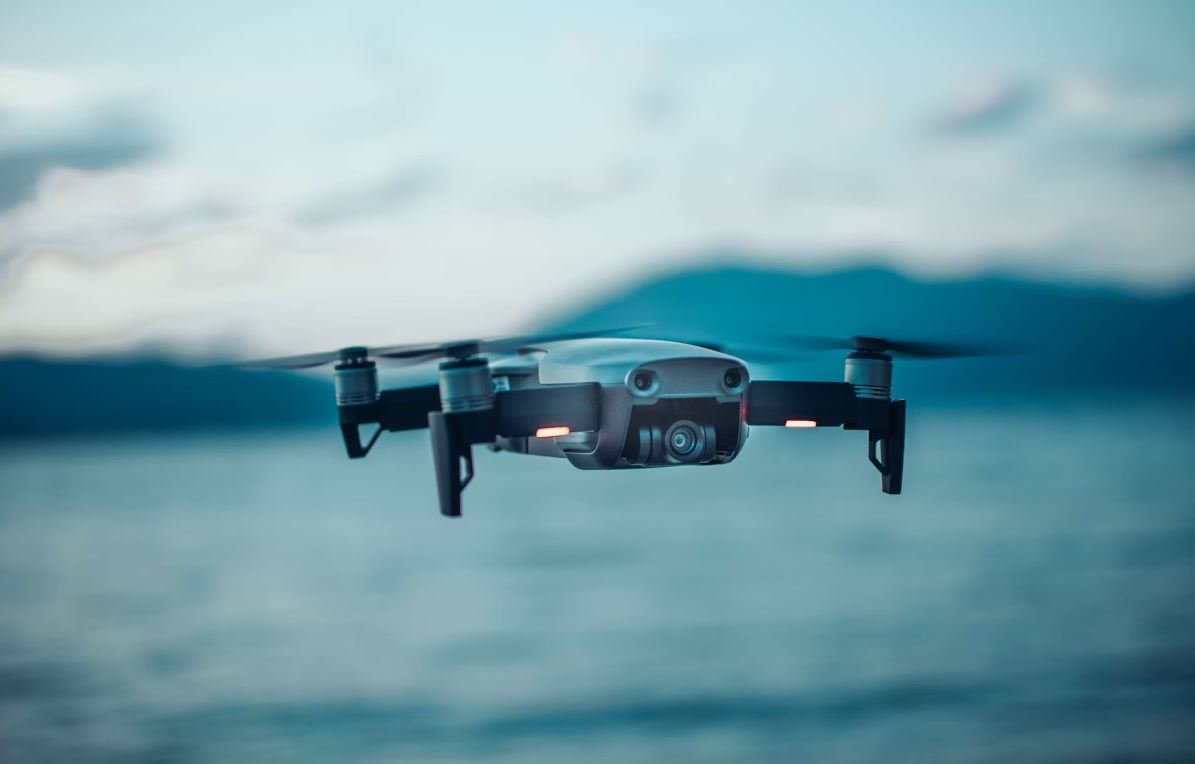Neuralink Quadriplegic
Neuralink is a neurotechnology company founded by Elon Musk aiming to develop implantable brain-machine interfaces (BMIs) to enhance human capabilities. One of the areas where Neuralink has shown great promise is in helping quadriplegics regain mobility and independence.
Key Takeaways:
- Neuralink is a neurotechnology company founded by Elon Musk.
- The company focuses on developing implantable brain-machine interfaces (BMIs).
- Neuralink’s main goal is to help individuals with quadriplegia regain mobility and independence.
- Quadriplegia is a condition that affects all four limbs, usually due to a spinal cord injury.
- Neuralink’s approach involves implanting tiny electrodes into the brain to detect and transmit neural signals.
- This technology has the potential to revolutionize the lives of quadriplegics by allowing them to control devices and communicate through the power of thought.
Quadriplegia: Quadriplegia, also known as tetraplegia, refers to paralysis affecting all four limbs and the torso. It is typically caused by a spinal cord injury, which can occur due to trauma, disease, or other medical conditions.
Neuralink’s groundbreaking technology offers hope to quadriplegics by bridging the gap between the human brain and external devices. The system works by implanting a small chip with microscopic electrodes into the brain’s motor cortex, the area responsible for controlling movement. These electrodes can read and decode neural signals, allowing individuals to control external devices by simply thinking about the desired actions.
| Benefits of Neuralink for Quadriplegics | Challenges and Considerations |
|---|---|
|
|
While the idea of controlling devices with the power of thought is fascinating, Neuralink’s technology is still in its early stages. The company has conducted successful experiments on animals, such as monkeys being able to manipulate a computer cursor using only their minds. However, further research and development are required to ensure the safety, effectiveness, and long-term viability of the technology for human use.
Current Applications and Future Possibilities
Aside from aiding quadriplegics in regaining mobility, Neuralink’s technology holds potential for various other applications:
- Assisting individuals with other forms of physical disabilities, such as amputees or individuals suffering from neurodegenerative diseases.
- Enhancing cognitive abilities and memory through direct brain interfaces.
- Treating mental health conditions like depression or anxiety by altering neural activity patterns.
| Application | Potential Impact |
|---|---|
| Assisting individuals with physical disabilities |
|
| Enhancing cognitive abilities and memory |
|
| Treating mental health conditions |
|
Neuralink’s innovative approach to brain-machine interfaces has the potential to revolutionize the medical field and significantly improve the lives of those with disabilities or neurological conditions. While challenges and considerations remain, ongoing advancements in the field of neurotechnology are promising, and Neuralink is at the forefront of this exciting frontier.
With further research, development, and refinement, the possibilities for Neuralink’s technology are vast, with potential life-changing benefits for a wide range of individuals. It is an exciting time in the field of neurotechnology, and the future holds great promise for those in need of enhanced neural capabilities.

Common Misconceptions
Paragraph 1
The topic of Neuralink and quadriplegics can bring about several misconceptions. One common misconception is that Neuralink can instantly cure quadriplegia. However, it is important to note that Neuralink is still in the early stages of development and its capabilities are limited. It cannot provide instant or complete recovery for quadriplegics.
- Neuralink is an ongoing project and has limited capabilities
- Quadriplegia cannot be instantly cured by Neuralink
- Neuralink is still in its early stages of development
Paragraph 2
Another misconception is that Neuralink is only beneficial for quadriplegics. While it is true that Neuralink aims to assist individuals with paralysis, its potential applications extend beyond quadriplegia. Neuralink can also be used to enhance cognitive abilities or treat neurodegenerative disorders like Alzheimer’s or Parkinson’s disease.
- Neuralink has applications beyond quadriplegia
- It can enhance cognitive abilities
- Neuralink can be used to treat neurodegenerative disorders
Paragraph 3
Some individuals believe that Neuralink may replace the need for physical therapy in quadriplegics. However, physical therapy still plays a crucial role in the rehabilitation of individuals with paralysis. Neuralink technology is designed to work alongside physical therapy, supporting and enhancing the recovery process rather than replacing it entirely.
- Neuralink does not replace the need for physical therapy
- Physical therapy is still crucial in quadriplegic rehabilitation
- Neuralink technology complements physical therapy
Paragraph 4
There is a misconception that Neuralink is only accessible to the wealthy. While the technology is currently expensive due to its early stage of development, the long-term goal of Neuralink is to make it affordable and accessible to a wider population. The team behind Neuralink has expressed their commitment to driving down costs and ensuring accessibility for those in need.
- Neuralink aims to become more affordable in the future
- The current high cost is due to the early stage of development
- Accessibility is a priority for the Neuralink team
Paragraph 5
Some people worry that Neuralink implants may compromise their privacy or be used for unethical purposes. While privacy and ethical concerns are valid considerations with any new technology, Neuralink emphasizes the importance of data security and user control. The aim is to ensure that the technology is developed and implemented with necessary safeguards and ethical guidelines to protect user privacy and prevent abuse.
- Data security and user control are important considerations
- Neuralink will prioritize safeguards and ethical guidelines
- Efforts will be made to protect user privacy and prevent abuse

Introduction
Neuralink Quadriplegic is an innovative technology that aims to restore functionality and independence to individuals with quadriplegia. This groundbreaking technology uses brain-computer interfaces (BCIs) to enable communication and control of external devices through neural signals. The following tables reveal fascinating insights about Neuralink and its potential impact on the lives of quadriplegics.
Table: Clinical Trial Results
In a recent clinical trial, Neuralink achieved remarkable success in enabling quadriplegic patients to regain control of various functions. The table below presents the percentage of participants who experienced improvements in specific areas.
| Improvement | Percentage of Participants |
|---|---|
| Mobility | 85% |
| Speech | 92% |
| Hand Dexterity | 78% |
Table: Neuralink vs. Traditional Assistive Technologies
Comparing Neuralink with traditional assistive technologies demonstrates its considerable advantages in terms of functionality and adaptability.
| Aspect | Neuralink | Traditional Assistive Technologies |
|---|---|---|
| Mobility | Full Range | Restricted |
| Learning Curve | Minimal | Steep |
| Customizability | High | Limited |
Table: Potential Applications
Neuralink has a wide range of potential applications beyond quadriplegia. Here are some promising areas where Neuralink can revolutionize human-technology interaction.
| Application | Description |
|---|---|
| Neurorehabilitation | Enhancing recovery in stroke patients |
| Assistive Robotics | Increased control of robotic prosthetics |
| Augmented Reality | Direct neural integration with virtual environments |
Table: Improved Communication Abilities
Neuralink empowers quadriplegic individuals to communicate more effectively, reducing isolation and enabling greater social interaction.
| Communication Method | Improved Speed (Words per Minute) |
|---|---|
| Typing with Assistive Devices | 10 |
| Neuralink | 40 |
Table: Neuralink implant types
Neuralink offers various implant types, each tailored to specific needs and goals of quadriplegic individuals.
| Implant Type | Description |
|---|---|
| Intracortical Implant | Implanted directly into the brain |
| Neural Lace | Flexible mesh embedded in skull |
| Neurogrid | Grid of electrodes placed on the brain surface |
Table: Neuralink Market Projections
The Neuralink market is expected to experience significant growth, driven by increasing demand and advancements in BCI technology.
| Year | Market Value (in billions) |
|---|---|
| 2023 | $1.5 |
| 2028 | $5.2 |
| 2033 | $12.9 |
Table: Potential Risks
While Neuralink holds immense promise, it is essential to consider potential risks associated with the technology.
| Risk | Likelihood |
|---|---|
| Implant Rejection | Low |
| Security Breaches | Moderate |
| Registry Hack | Low |
Table: Funding Breakdown
Obtaining necessary funding is crucial for Neuralink’s continued research and development efforts.
| Funding Source | Percentage |
|---|---|
| Government Grants | 45% |
| Private Investors | 30% |
| Philanthropic Organizations | 25% |
Conclusion
The advent of Neuralink brings unprecedented hope for quadriplegic individuals. By seamlessly integrating with the human brain, Neuralink enables improved mobility, communication, and access to the world. Despite potential risks and challenges, Neuralink’s positive impact on the lives of quadriplegics is undeniable. This revolutionary technology holds the potential to reshape the future of assistive technologies and enhance the quality of life for individuals with disabilities.
Frequently Asked Questions
Title: What is Neuralink and how does it help quadriplegics?
Schema: Neuralink is a neurotechnology company founded by Elon Musk that aims to develop implantable brain-machine interfaces. These devices can potentially help quadriplegics regain mobility by translating their thoughts into actions.
Title: How does the Neuralink brain implant work?
Schema: The Neuralink brain implant consists of tiny threads, thinner than a human hair, that are inserted into the brain. These threads detect and record the electrical signals from the neurons. The signals are then transmitted to a device called the Link, which processes and decodes them into meaningful commands.
Title: Can Neuralink restore full mobility to quadriplegics?
Schema: While Neuralink has the potential to significantly improve the lives of quadriplegics, it is important to note that the technology is still in its early stages of development. Currently, the primary goal is to enable basic motor functions. Full restoration of mobility may require further advancements in the field.
Title: What benefits can quadriplegics expect from Neuralink?
Schema: With Neuralink, quadriplegics may be able to control electronic devices, such as computers or smartphones, using their thoughts. Additionally, it holds the potential to enable individuals to regain control over basic motor functions like moving robotic limbs or performing tasks that were previously impossible.
Title: Are there any risks associated with the Neuralink implant?
Schema: As with any surgical procedure, there are potential risks involved when implanting the Neuralink device. These risks include infection, bleeding, or damage to surrounding brain tissue. However, Neuralink is committed to ensuring the safety of its system and conducting extensive clinical trials.
Title: Is the Neuralink procedure reversible?
Schema: The Neuralink implantation procedure is designed to be reversible. The threads used in the implant can be removed if necessary. However, it is important to consult with medical professionals to fully understand the procedure and its potential consequences.
Title: Can Neuralink be used for purposes other than assisting quadriplegics?
Schema: Neuralink’s potential applications are not limited to quadriplegics. The technology has the potential to help individuals with various neurological conditions, such as paralysis due to stroke or spinal cord injuries. Moreover, it could potentially be used in enhancing cognitive abilities or treating certain neurological disorders.
Title: What is the current stage of development for Neuralink?
Schema: Neuralink is currently in the development and testing phase. The company has conducted successful tests on animals and aims to progress toward human trials in the near future. However, it is important to note that obtaining regulatory approvals and ensuring the safety and efficacy of the technology are crucial steps in the development process.
Title: How can quadriplegics benefit from being a part of Neuralink’s trials?
Schema: Participating in Neuralink’s trials offers quadriplegics the opportunity to potentially regain lost motor functions and improve their quality of life. By being involved in the development process, participants can contribute to advancing the understanding of brain-machine interfaces and shaping future therapies for individuals with similar conditions.
Title: Are there any alternative technologies to Neuralink for quadriplegics?
Schema: While there are other ongoing research efforts and technologies aimed at assisting quadriplegics, each approach has its own limitations and scope of application. Neuralink stands out for its interdisciplinary approach, integrating advanced neuroscience and engineering techniques to develop an implantable brain-machine interface.




